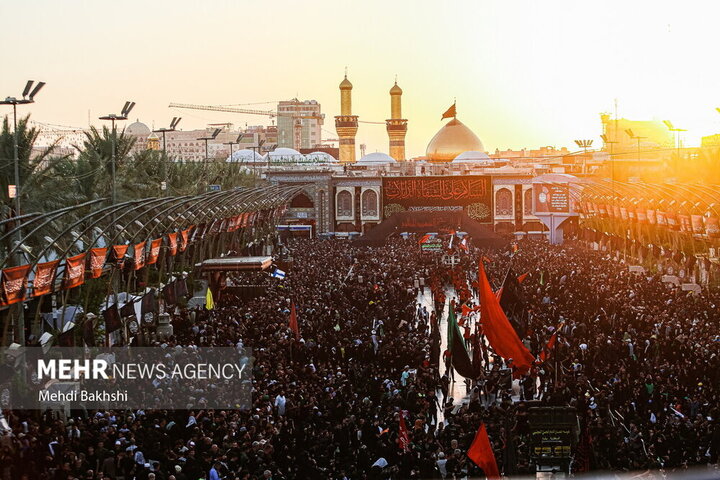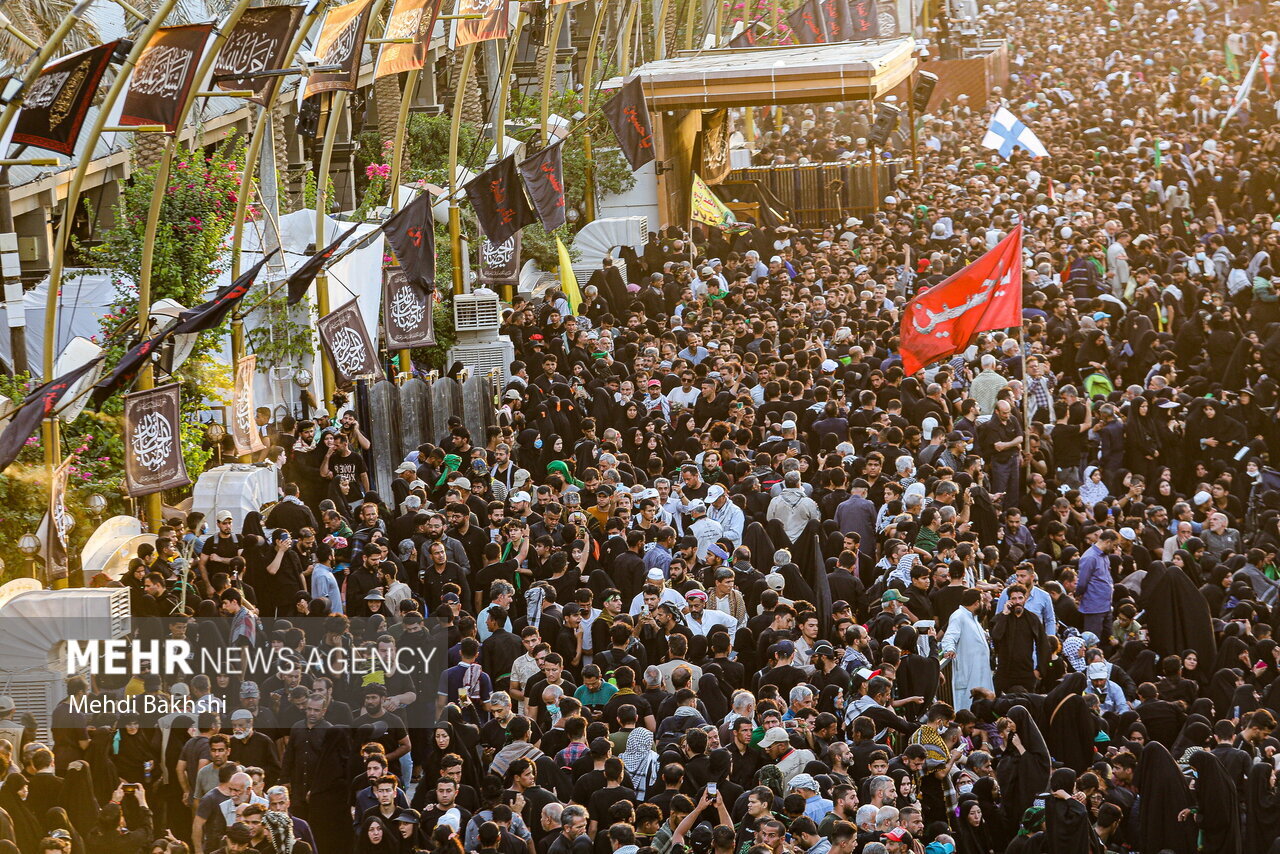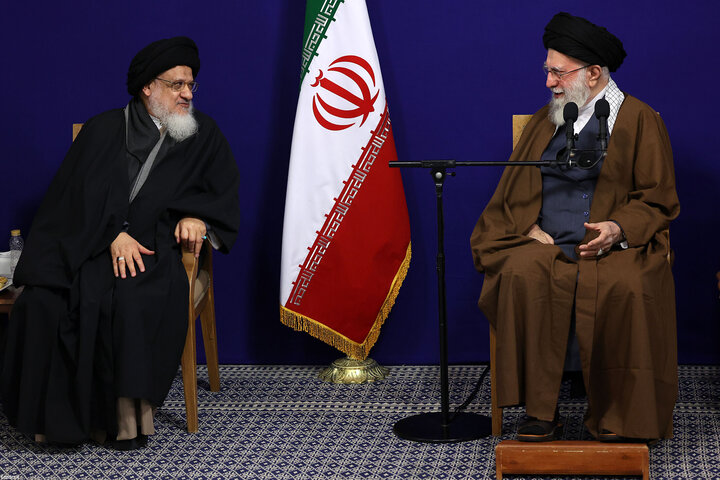
What do we know about the Arbaeen Walk?
Arbaeen Walk (Arbaeen pilgrimage) has witnessed ups and downs in different periods of Islamic governments. Today, the number of Iraqi and non-Iraqi pilgrims participating in the ritual exceeds several million.
Visiting the graves of loved ones is one of the religious traditions in Islam that people do to find spiritual solitude and remind themselves that this world that we’re living in is not eternal.

One of these pilgrimages is the Arbaeen pilgrimage, which is held 40 days after the martyrdom of Imam Hussain (AS), the third imam of the Shiites, in the form of a walk toward his and his companions’ shrine in Karbala. The ceremony, which today has turned into a gathering with the participation of millions of people, is considered one of the most influential symbols of solidarity among the Shiite world.
In the Arbaeen procession, different groups of Muslims gather, both Shia and Sunni. Even people from other religions and ethnicities also attend the ceremony, making the event the largest annual religious gathering in the world.
The unique quality of the Arbaeen Walk
The ceremony of Arbaeen offers a special quality among all the pilgrimage ceremonies of Shiite Muslims. As mentioned, pilgrims from different countries of the world walk to the cities of Najaf and Karbala every year from the 7th to the 20th of the month of Safar (the second month of the Hijri calendar).
Pilgrims would come to Iraq to visit the shrine of Hazrat Ali (AS), the first imam of Shiites, in Najaf and the shrine of his son, Imam Hussein (AS) in Karbala, to empathize with the captives of the Karbala battle; The captives who were forced by Yazid’s army to go to Bilad al-Sham (the current capital of Syria) from the deserts of Iraq.
In this traditional ritual, most of the pilgrims go from Najaf to Karbala on foot. Along the path of the procession, there are places to serve the pilgrims, which are called mawkib (voluntarily prepared station). The mawkibs are organized by people from different countries.
The philosophy of Arbaeen Walk
During the trip, the pilgrims bear the suffering of long walks to honor the memory of the Karbala captives in the year 61 AH and to learn from their sufferings and resistance.
An overview of historical records of the Arbaeen walk
From the historical quotations, it is learned that visiting the holy shrines of the Imams on foot was common during the lifetime of the Imams and took place in different parts of the Islamic territories. But in different Islamic centuries, due to strictness and fear of Shiites gaining power, the ritual faced many problems.
In fact, visiting the Imam Hussein (AS) shrine on the day of Arbaeen is one of the continuous traditions of Shiites, and the Shias adhered to this ritual during the era of the Umayyad dynasty and Abbasid dynasty.

Of course, the Safavid government in Iran also played a great role in introducing the culture of on-foot pilgrimage. In this regard, it is narrated that Shah Abbas Safavi (Abbas the Great) and the great scholars of his era, such as Sheikh Baha’i (Baha’ al-din al-‘Amili), in 1009 AH decided to go to Mashhad from Isfahan on foot to visit the shrine of Imam Reza (AS) in order to promote the culture of pilgrimage among the people.
Saddam Hussein’s pressure on pilgrims
After Saddam Hussein and his Ba’ath party took power in Iraq, the Arbaeen Walk faced many restrictions. Some reports indicate that people have been killed in clashes with Saddam’s forces back then. However, it has been said that despite the restrictions, many religious scholars have declared it obligatory to walk to Karbala.
In an Arabic book (named سنوات الجمر), which was published in 2004, it is stated that in 1397 AH (1977 AD), the Iraqi Ba’ath Party banned religious ceremonies, organized processions, and walks to Karbala.
Concerning the restriction of the Arbaeen pilgrimage in 1977, it is mentioned that Saddam Hussein’s government confronted the Iraqi people’s Karbala visit, and a number of people were killed and imprisoned in this regard. Some scholars, such as Allameh Askari and Mohammad Hussein Fadlallah, who had fled Iraq, were also sentenced to death in absentia.
The situation of Arbaeen walk after the fall of Ba’ath Party
With the fall of the Iraqi Ba’ath party in 2003 and the attack of the US on the country, the Arbaeen pilgrimage ceremony was revived. Every year, in addition to Iraqi Shiites, Shiites from other countries, especially Iran, also join the Arbaeen procession. According to reports, in addition to Shiites, different groups of Sunnis, Christians, Yazidis, and other religions also attend the Arbaeen pilgrimage.

Today, in addition to countries like Iran, Afghanistan, and African countries, there are reports that people from Sweden, Denmark, the US, the UK, Austria, Finland, Argentina, Colombia, Russia, and Australia also attend the Arbaeen procession.
Arbaeen pilgrimage in ISIL era
Since 2014, with the support of the Iranian government, the number of Arbaeen pilgrims approached 20 million, mostly from foreign countries. This is while the statistics of the Iraqi interior ministry for 2013 indicated that about 1.3 million foreign pilgrims entered Iraq for the Arbaeen procession.
In 2015, while the threat of the ISIL terrorist group and other Takfiri groups was felt in the region, the number of Arbaeen pilgrims was estimated at 22 million; Although the Iraqi authorities announced the number of pilgrims at 26 million in the same year. In recent years and despite the COVID-19 pandemic, the average attendance of Arbaeen pilgrims has been announced between 12 million and 20 million people.
Number of Arbaeen pilgrims in recent years
In 2016, the manager of Hazrat Abbas (AS) shrine announced that more than 11.2 million people entered Karbala from Safar 7 -20.
In 2018, Imam Hussain (AS) shrine’s manager that more than 11.85 million people entered the city through the main gates of Karbala from Safar 10 – 20.

A year ago, while the COVID-19 pandemic was declining, there were still effects of the spread of the virus in the world. However, when the first year without coronavirus restrictions was announced, news agencies announced the number of Arbaeen pilgrims to more than 21 million.
MP





